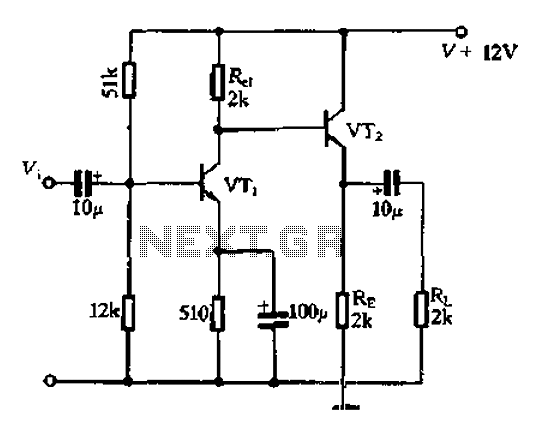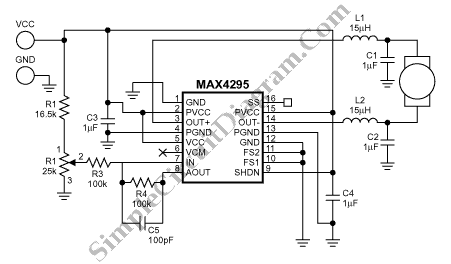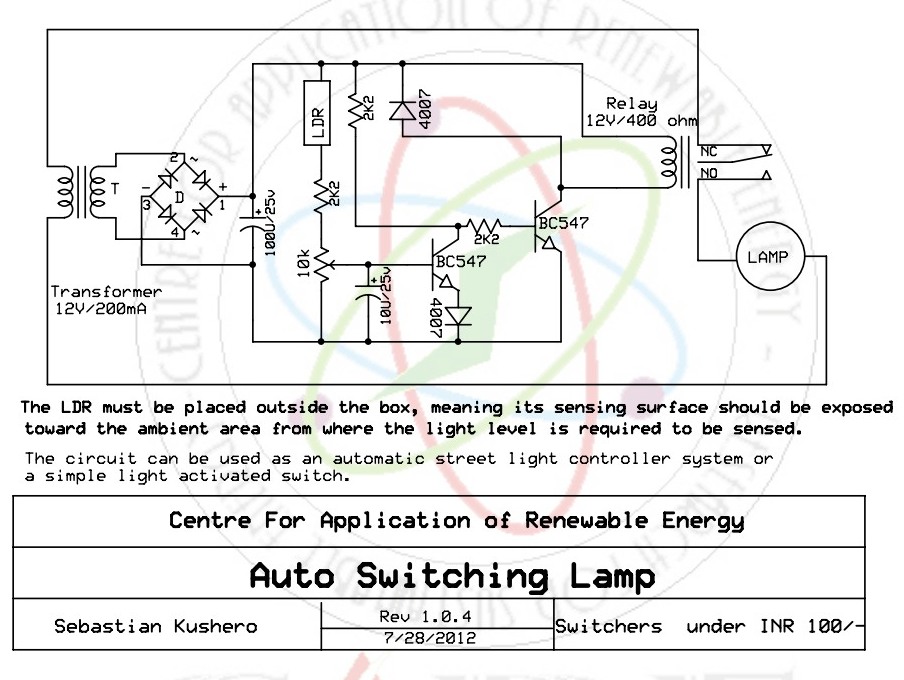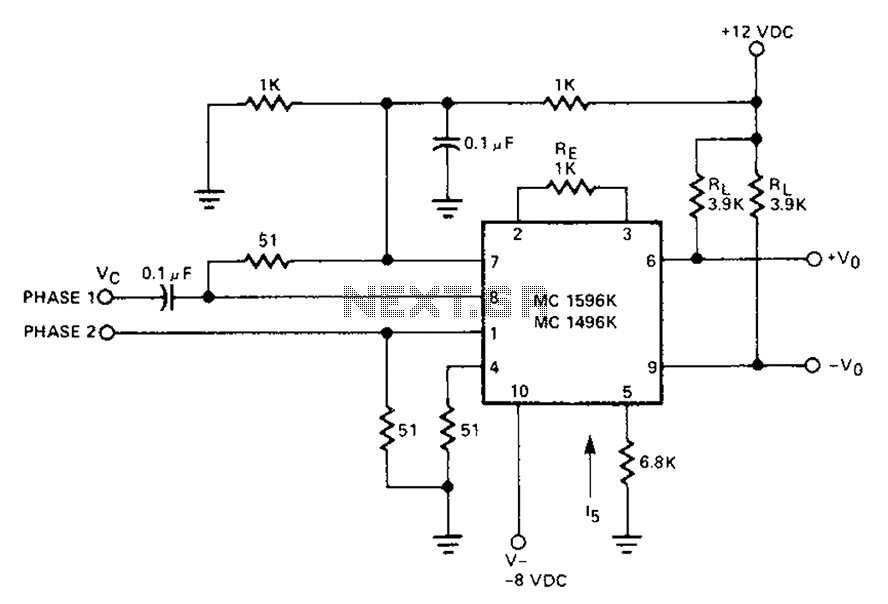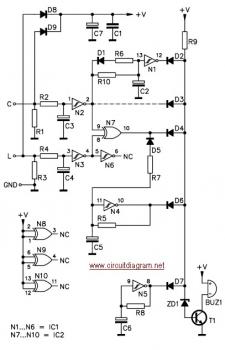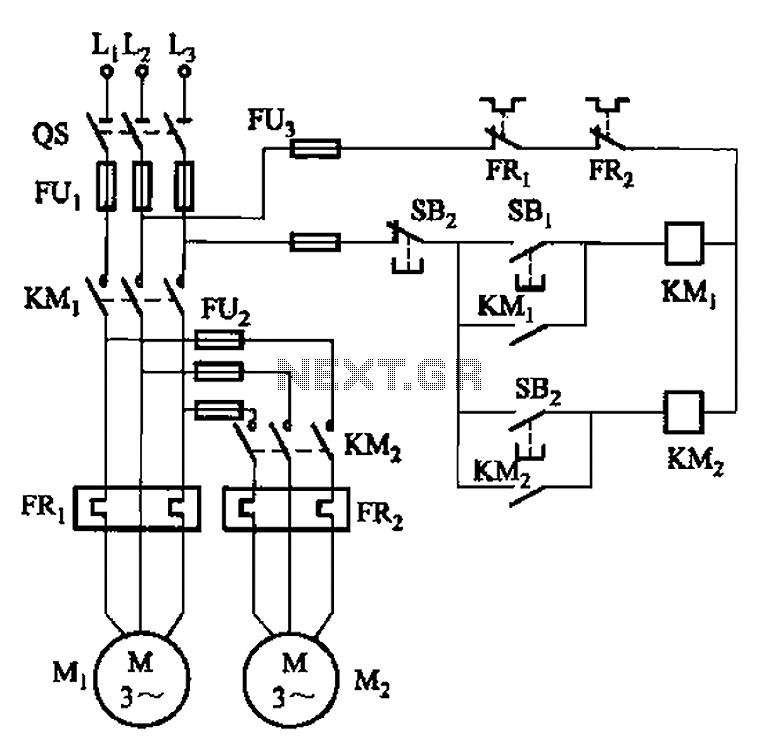
DC-Coupled Audio Amplifier circuit
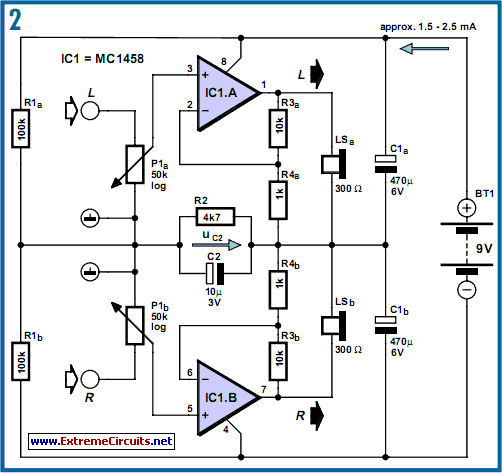
Designs for audio amplifiers with DC coupling to the load are not frequently seen today, despite offering distinct advantages.
Audio amplifiers that employ DC coupling to the load provide several benefits that can enhance performance in specific applications. In traditional audio amplifier designs, AC coupling is commonly used, which involves the use of capacitors to block any DC component from the signal path. While this method is effective in preventing DC offsets from affecting the audio signal, it can introduce issues such as phase shift and reduced low-frequency response.
DC coupling, on the other hand, allows the full audio signal, including any DC component, to pass through to the load. This can result in improved transient response and a more accurate reproduction of the audio signal, particularly in low-frequency applications. Additionally, DC coupling can simplify the design by eliminating the need for coupling capacitors, which can also reduce the overall cost and complexity of the circuit.
When designing a DC-coupled audio amplifier, careful consideration must be given to the biasing of the amplifier stages to ensure that the output remains within the linear operating range. This typically involves setting a proper quiescent point for transistors or operational amplifiers used in the circuit. It is essential to ensure that the load impedance is compatible with the output stage of the amplifier, as DC coupling can lead to issues if the load is not appropriately matched.
Furthermore, the design should account for potential DC offsets that may arise from variations in component tolerances or temperature changes. Implementing feedback mechanisms can help mitigate these offsets and maintain signal integrity. Overall, while DC-coupled audio amplifiers are less common in contemporary designs, they remain a viable option for specific applications where their advantages can be fully realized.Designs for audio amplifiers with DC coupling to the load are not often encountered these days, even though they offer definite advantages.. 🔗 External reference
Audio amplifiers that employ DC coupling to the load provide several benefits that can enhance performance in specific applications. In traditional audio amplifier designs, AC coupling is commonly used, which involves the use of capacitors to block any DC component from the signal path. While this method is effective in preventing DC offsets from affecting the audio signal, it can introduce issues such as phase shift and reduced low-frequency response.
DC coupling, on the other hand, allows the full audio signal, including any DC component, to pass through to the load. This can result in improved transient response and a more accurate reproduction of the audio signal, particularly in low-frequency applications. Additionally, DC coupling can simplify the design by eliminating the need for coupling capacitors, which can also reduce the overall cost and complexity of the circuit.
When designing a DC-coupled audio amplifier, careful consideration must be given to the biasing of the amplifier stages to ensure that the output remains within the linear operating range. This typically involves setting a proper quiescent point for transistors or operational amplifiers used in the circuit. It is essential to ensure that the load impedance is compatible with the output stage of the amplifier, as DC coupling can lead to issues if the load is not appropriately matched.
Furthermore, the design should account for potential DC offsets that may arise from variations in component tolerances or temperature changes. Implementing feedback mechanisms can help mitigate these offsets and maintain signal integrity. Overall, while DC-coupled audio amplifiers are less common in contemporary designs, they remain a viable option for specific applications where their advantages can be fully realized.Designs for audio amplifiers with DC coupling to the load are not often encountered these days, even though they offer definite advantages.. 🔗 External reference
Warning: include(partials/cookie-banner.php): Failed to open stream: Permission denied in /var/www/html/nextgr/view-circuit.php on line 713
Warning: include(): Failed opening 'partials/cookie-banner.php' for inclusion (include_path='.:/usr/share/php') in /var/www/html/nextgr/view-circuit.php on line 713
